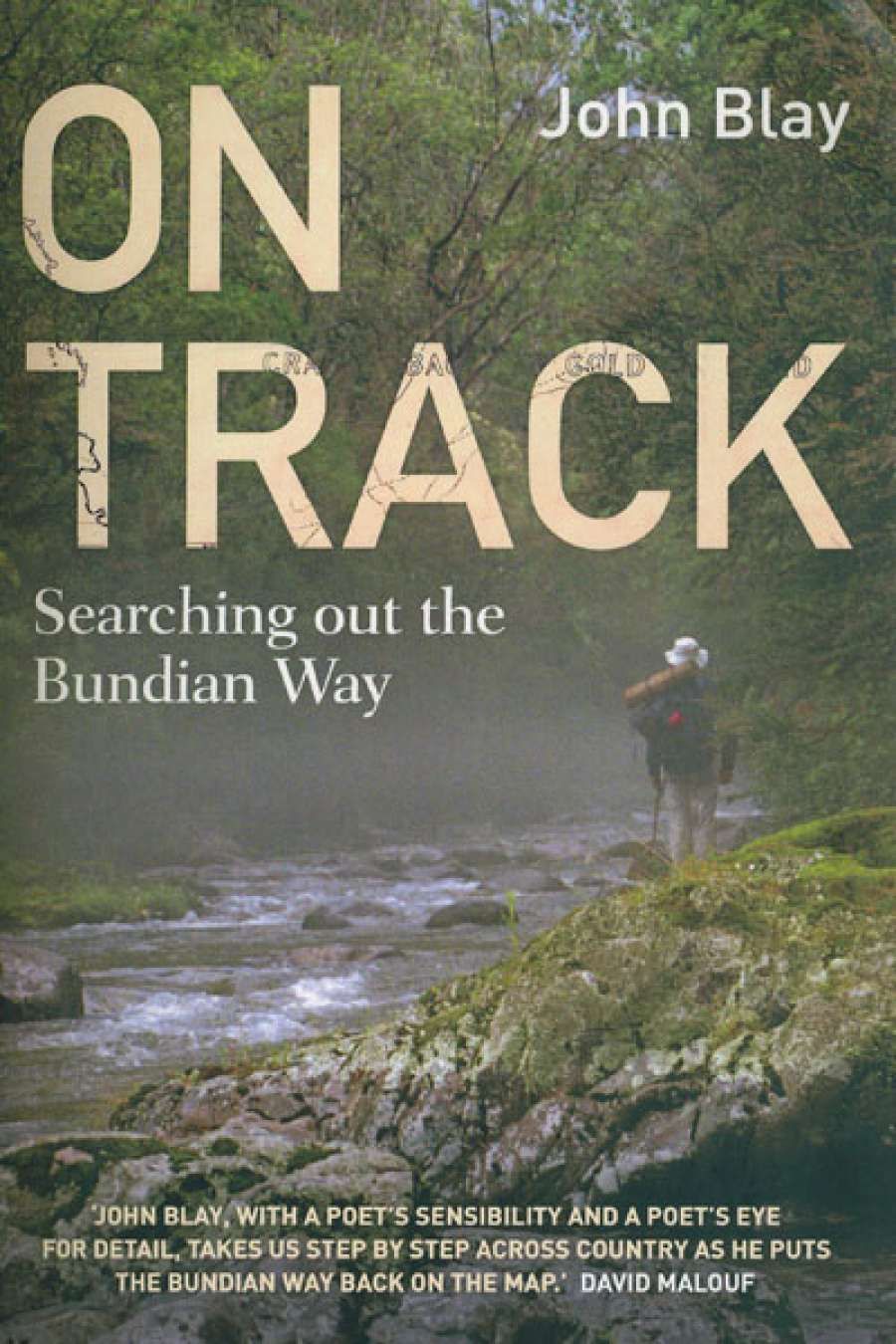
- Free Article: No
- Contents Category: Natural History
- Custom Article Title: Robert Kenny reviews 'On Track' by John Blay
- Book 1 Title: On Track
- Book 1 Subtitle: Searching Out the Bundian Way
- Book 1 Biblio: NewSouth, $39.99 pb, 342 pp, 9781742234441
It is at these moments that we sense not just the landscape as it is but the Aboriginal landscape, the sense of how living and travelling in this place once was, and with that the continuing importance of Country. Blay here and there finds a ‘classic example of the Aboriginal landscape … which contains not only a good sample of the original flora and fauna, but also a good number of food plants and signs of land use through the ages’. The signs are often artefacts, stone implements for instance which walkers are advised to leave in place. Looking at these sites, Blay ponders, as have others before him, if he is looking at a garden ‘deliberately cultivated by the old Aboriginal people’. The dichotomy of gatherer and farmer is not clear cut and the Neolithic Revolution might not have been as stark as the term implies. In any case, as most historians, though not necessarily conservationists, have accepted for decades, Aboriginal Australia was an intricately managed landscape.
 Kosciuszko National Park (photograph by Cimexus via Wikimedia Commons)
Kosciuszko National Park (photograph by Cimexus via Wikimedia Commons)
But this old Country, and the Bundian Way, has to be recovered from beneath dramatic changes to the landscape. Settlers’ grazing hardened the surface and changed the structure of streams. Then came the Snowy Mountain Scheme, which turned the raging Snowy River, once an important part of the Aboriginal cycle, into a much diminished stream. Paradoxically, logging along with the removal of Aboriginal land management allowed areas to simply ‘scrub up’ and hide the old country. Blay finds his way to the coast blocked halfway by a mountain ridge, and the Bundian Way becomes elusive. He knows there is a pass, but he cannot find it, even though it must once have been obvious. He tries from the other side, from Twofold Bay, but is still thwarted.
‘We have lost much in our reliance on, even fetishisation of, the wheel, as Blay’s search for an old Aboriginal route from mountain to coast demonstrates’
Blay’s is not a continuous walking, but many journeys, over several years, often interrupted as he consults old maps and surveys, histories, living Koori knowledge. Fire is a constant, as an important part of Aboriginal land management (though as Blay makes clear not the only form), and as catastrophic bushfire when that management stops. But the most tragic fire for Blay’s search is not in the bush. The burning in 1882 of Sydney’s Botanic Garden Palace destroyed many maps and journals that recorded the land not long after the settlement, particularly the notebooks of W.B. Clarke, who made extensive surveys of the area in the early 1850s. Blay is certain that Clarke found and knew the Bundian Pass, but his remaining descriptions are fragmentary and imprecise, especially in an environment so changed.
Eventually, it is a discussion with two old-timers, who seemed surprised that Blay can’t see the pass, that brings him back to the country itself, back to walking ‘where the creeks and hills carry their own logic’. Suddenly the Pass becomes clear to him – but unfortunately not to the reader. From this point, the book oddly truncates and we are left with a sense of anti-climax, particularly annoying since it follows a long chapter on Scottish settlers that is clearly tangential.
Blay sees recovery of the Bundian Way and its maintenance as forms of reconciliation, a way along which Aboriginal and settler/migrant can walk together and understand ancient and shared histories and their embodiment in the landscape. The settlers’ route from mountain to coast sometimes followed the ancient one, but it veered from it to use the wheel, moving from station to station seeking hospitality. This echoed and contrasted with the ancient way, where walking groups moved from one regular campsite to another seeking the hospitality of Country – the bountiful land and its stories.


Comments powered by CComment